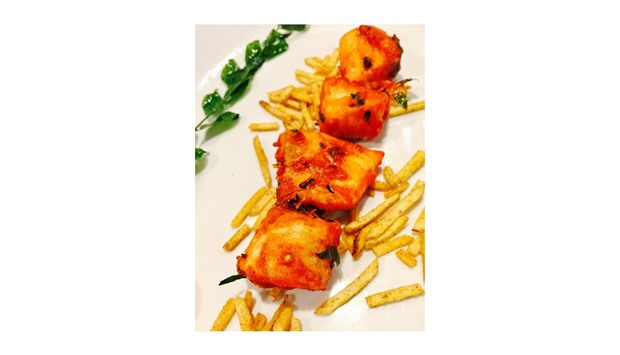With the advent of winter, all that I think in the evenings now is how to make evening foods more appropriate for winters. Fried fish is liked by masses and is always special to me too.
So here I present one of my personal favourite dishes, the Koliwada Fish. Many of you might think that the Maharashtrian and Konkan cuisines are similar, but you are wrong. The cuisine of Konkan region is called Malvani cuisine and overlaps between Maharashtrian and Goan cuisine – thus the confusion.
Despite being a coastal region, the Malvani cuisine is distinct in itself. It predominantly uses coconut in all its glory – grated, milk, dry roasted or powdered form.
Let’s come back to today’s topic of Koliwada. One of the oldest places near the historic fort of Worli – built by British around 1675 – is this 600 years old Worli village that is famous for fishing. The Koli community, who were the early inhabitants of then the seven-island city, gave the place its famous name of ‘Worli Koliwada’ in Mumbai.
These Koli families are still in the fishing business – they go to sea early in the morning and sometimes late at night via the connected Mahim Creek and the beach. The famous and huge Bandra Worli Sea Link can be seen from inside the village.
Entering the village, one is greeted by the smell of fishes being dried in the open hot air near the little sandy beach, mainly used by the villagers themselves. It is easy to spot the orange-coloured (Bhagwa coloured in Hindi) traditional boats, painted white with blue and orange edges.
Going deeper into the village, one can see small yet colourful shanties and chawls, old duplexes with those iron stairs used to climb from the outside, a view of clothes kept out in the open under the bright sun to dry, and also a glimpse of colourful pots containing Tulsi plant and flowers. People choose different colours to paint their houses, so it is all a mishmash of technicolour. The zig-zag lanes though, called ‘gullies’ in Mumbai, may confuse you a bit about where you entered from.
The villagers pray to and ask for blessing from the wide Arabian sea, asking for enough fish and for the safety of themselves and their families. Occasionally they also put ‘tika’ on their boats (a small red-coloured dot).
The big wooden fish baskets are sturdy enough to carry fishes to the market in a vehicle and also remove excess water, keeping the fishes fresh for longer. The baskets are individually marked, usually in green colour, so that they can be identified when leaded together and taken to the market.
In short, this fishing village is a perfect place to see the lives of fishermen.
What’s more? Ask for help and the people here will spring to your help. This is not just true for this village though. Go to any corner of this city, and the village people are equally helpful in anything that you ask of them.
Koliwada Fish
Ingredients
Seabass fillet 500gm
Lemon juice 1 tbsp
Coriander leaves, chopped ½ cup
Ginger, paste 1 tsp
Garlic, paste 1 tsp
Red chilli powder 1 tsp
Turmeric powder ½ tsp
Garam masala 1 tsp
Caraway powder 1 tsp
Fennel powder 1 tsp
Rice flour 3 tbsp
Salt to taste
Curry leaves chopped 3 tbsp
Oil to fry
Garnish
Potato crispies to garnish
Curry leaves few sprigs
Method
Pat dry fish fillet and cut into 1½ inch cubes and apply salt and turmeric to it and refrigerate for half an hour.
In a separate clean bowl combine ginger, garlic, red chilli powder, garam masala, caraway, fennel powder, and rice powder to make a smooth masala mixture.
Add chopped curry leaves to the above mixture and apply this prepared marinade to the fish.
Keep for 30 minutes in the refrigerator.
Heat oil in a heavy bottom pan and fry the fish cubes over medium heat.
Fry till the crust is crispy and the fish is cooked from inside.
Serve hot, garnished with potato crispies and curry leaves on the side.
Note: you can replace sea bass with any other fish, depending on availability and personal preference.
* Chef Tarun Kapoor,
Culinary Mastermind, USA. He may be contacted at [email protected]

Koliwada Fish


